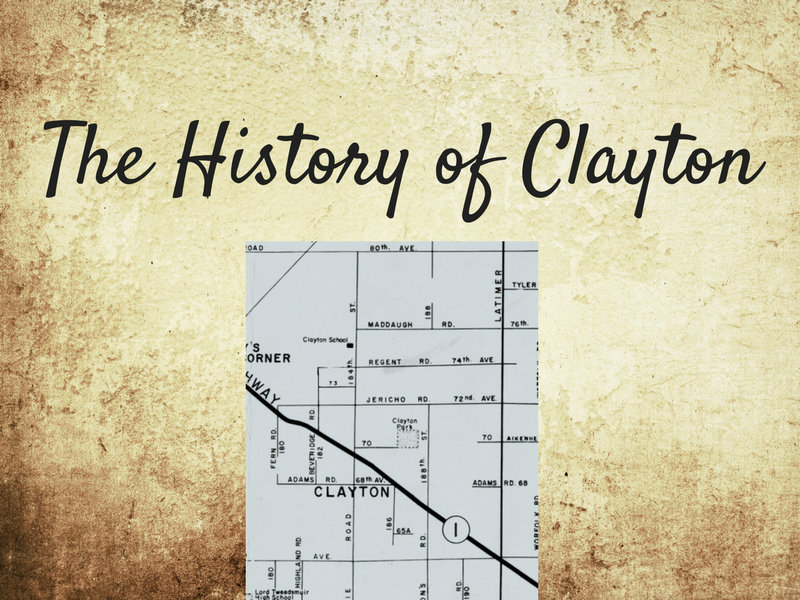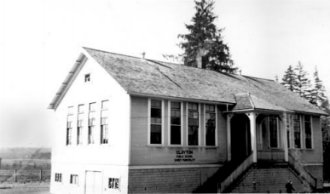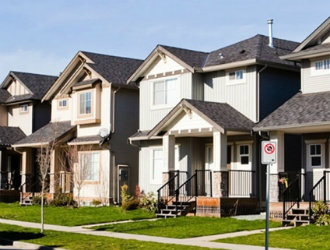The History of Clayton, Surrey
Posted by Robbie Johal on Thursday, January 18th, 2018 at 4:26pm

Have you ever wondered when Surrey's Clayton neighbourhood was first discovered by British and American settlers? How about the origin of its name? The short-term and long-term history of Clayton (aka. Clayton Heights) is rich and interesting, and has certainly shaped the current state of affairs within the community, particularly the issue of affordable rental options in the Clayton real estate market. Let's take a look back at the neighbourhood's history and discover how we got to where we are today.
Early History
According to a heritage study by the City of Surrey that also cites an article in The Surrey Leader, Clayton was occupied by the Katzie and Semiahmoo First Nations people until the early 1880s, when American and British settlers arrived in the area. This makes Clayton one of the oldest neighbourhood's in Surrey. Upon being settled in 1883, the area was known as both Serpentine Flats and Clover Valley.
Similar to the rural surroundings that the community is known for today, the area was originally described as the most thickly settled section of Surrey, with the name Clover Valley referencing the large amount of clover. The land had many alder and cotton wood trees, although nearly all of them were dead and therefore easy to clear. With the land being mostly flat and the soil being conducive to the growth of wheat, vegetables, oats and barley, the clearing of the trees created a quality farming area.
The area was named Clayton in 1889 after the Clayton, Ohio hometown of John George, the first postmaster. Much like today, Clayton was bordered by the communities of Cloverdale, Fleetwood, Langley, and Port Kells, and the community was divided into East Clayton and West Clayton. Not surprisingly due to its geography, the majority of the estimated 200 residents in the late 19th century were listed as farmers. However, there were also two ministers, a postmaster, a blacksmith and a teacher who taught at a school that was first built in 1891 and remains the site of the current Clayton Elementary School. In fact, a version of the school that was built in 1921 still stands beside the current school and has been listed as a heritage building.
 By 1919, an increasing number of residents were listed as being in the poultry-raising industry, with others were bee keepers and workers at a recently built lumber mill, in addition to farmers. Clayton also boasted a general store and become amalgamated with Cloverdale in 1920. The decades that followed saw only minor development take place as the community remained primarily an agricultural area, although industrial development started to occur in the 1960s just north of the area following the completion of the Trans-Canada Highway.
By 1919, an increasing number of residents were listed as being in the poultry-raising industry, with others were bee keepers and workers at a recently built lumber mill, in addition to farmers. Clayton also boasted a general store and become amalgamated with Cloverdale in 1920. The decades that followed saw only minor development take place as the community remained primarily an agricultural area, although industrial development started to occur in the 1960s just north of the area following the completion of the Trans-Canada Highway.
Recent History and Residential Development
While Clayton remained mainly an agricultural area throughout the 20th century, it continued to grow as both a transportation hub and a place where residents could make their home in a mainly rural atmosphere. A portion of land in West Clayton has remained (and still remains) part of Agricultural Land Reserve. It wasn't until the late 1990s when discussions began that would eventually result in the rest of Clayton undergoing significant changes.
In 1998, the City of Surrey began the process to create a Neighbourhood Concept Plan (NCP) for East Clayton after local land owners petitioned the city to create a more urban area so they could sell their land for a greater profit. However, East Clayton was also home to three salmon streams and there were fears that many of the fish would be killed by urban runoff, so sustainability was a big issue at the time as well.
The main goal was always to create a walkable neighbourhood with a diverse mix of housing types, while respecting the landscape of Clayton. In 2003, the city released a NCP to build a civic centre with a community hall, parks, and schools near 72nd Ave. and 188th St., along with a business park near Fraser Hwy and 192nd St., and several higher density residential areas near Willowbrook and the civic centre. The NCP also outlined the following principles of sustainability:
- Conserve land and energy by designing compact walkable neighbourhoods. This will encourage pedestrian activities where basic services are within a five to six minute walk of all homes
- Provide different dwelling types in the same neighbourhood and even on the same street
- Communities are designed for people; therefore, all dwellings should present a friendly face to the street in order to promote social interaction
- Ensure that car storage and services are handled at the rear of dwellings
- Provide an interconnected street network, in a grid or modified grid pattern, to ensure a variety of itineraries and to disperse traffic congestion and provide convenient public transit to connect East Clayton with the surrounding region
- Provide narrow streets shaded by rows of trees in order to save costs and to provide a greener, friendlier environment
- Preserve the natural environment and promote natural drainage systems
 Of course, you can argue the degrees to which these initiatives have been successful over the years, but there isn't much debate over which issue has been the most contentious with Clayton residents in recent months. The fourth point of ensuring that cars are stored at the back of homes became tied into a bigger issue of whether the city should crackdown on secondary rental suites due to street parking congestion.
Of course, you can argue the degrees to which these initiatives have been successful over the years, but there isn't much debate over which issue has been the most contentious with Clayton residents in recent months. The fourth point of ensuring that cars are stored at the back of homes became tied into a bigger issue of whether the city should crackdown on secondary rental suites due to street parking congestion.
You see, in order to create an affordable community with homes that wouldn't disturb the streams and farms, the powers that be decided to build smaller lots with homes located closer to the front sidewalk in order to accomplish the goal of promoting social interaction and creating a friendlier community. Another way to make the community affordable was to legalize rental suites, which meant that these houses would have to include lanes at the back for owners to park their cars.
Clearly those who planned this community at the turn of the 21st century foresaw the potential parking issue and tried their best to control it. Unfortunately, not as many residents have been using those rear lanes and garages to park their cars as the city would like, which caused the congestion issue that led to the controversy over secondary rental suites.
In the end, the city decided to make secondary suites legal, but the issue of how to keep everyone happy (especially those looking to park their cars on Clayton's narrow residential streets) will continue to cause debates, which is exactly what the city predicted when they planned Clayton's future two decades ago.
Robbie Johal has been an authority in the Clayton real estate market for well over a decade. He's one of the top selling REALTORS® and can provide advice to anyone looking to buy or sell a home in Clayton, Cloverdale, and throughout Surrey and Langley. Feel free to contact Robbie for more info about how he can help you achieve your real estate goals.
REFERENCES
- City of Surrey heritage study on West Clayton
- City of Surrey East Clayton Neighbourhood Concept Plan
- Column in the Surrey Now-Leader about Clayton development history

Leave A Comment